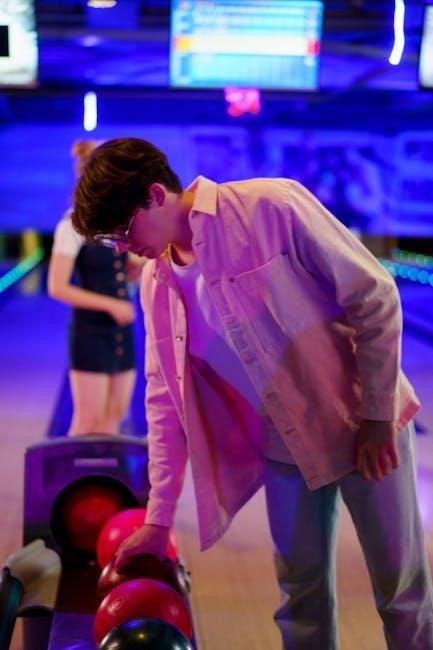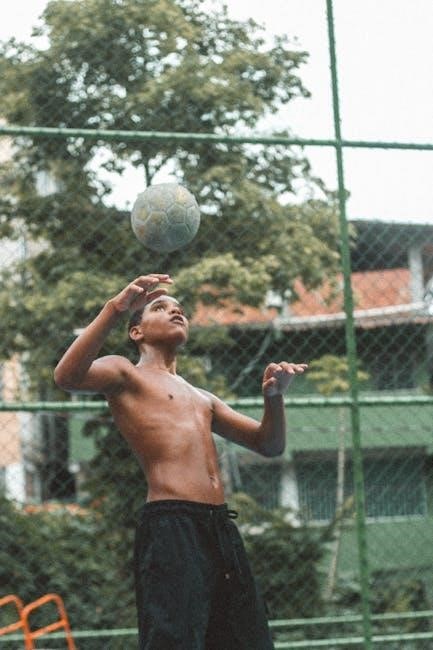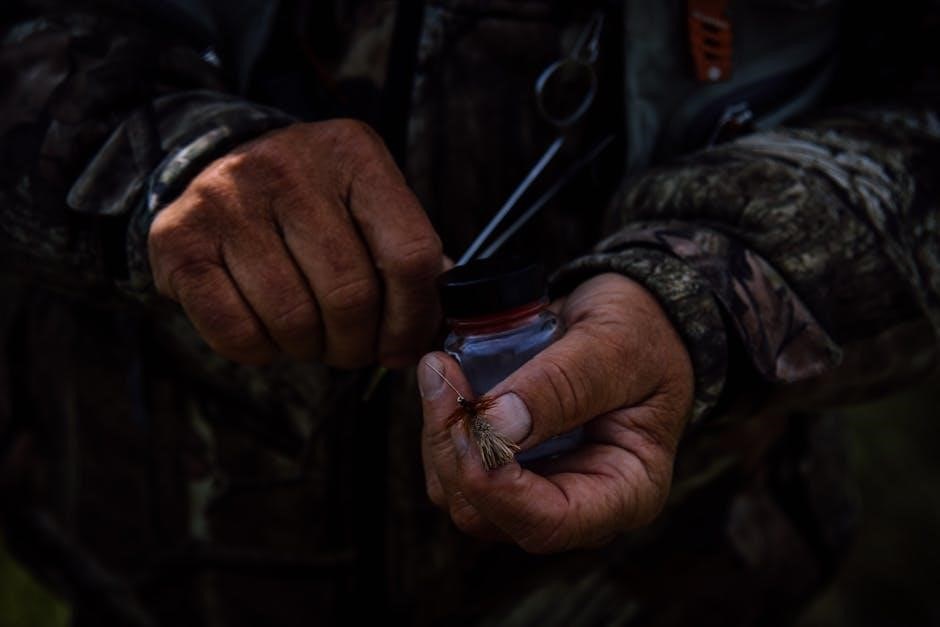acl return to sport test pdf
ACL Return to Sport Testing: A Comprehensive Guide

This guide offers insights into ACL Return-to-Sport testing, crucial for athletes post-ACL reconstruction. It addresses criteria, functional testing algorithms, limb symmetry, strength, and psychological readiness.
ACL Return to Sport (RTS) testing is a critical phase in rehabilitation following Anterior Cruciate Ligament (ACL) reconstruction. It serves as a comprehensive assessment to determine an athlete’s readiness to safely return to their pre-injury level of activity. This testing goes beyond simply evaluating the structural integrity of the reconstructed ligament; it encompasses a multifaceted evaluation of physical function, strength, neuromuscular control, and psychological preparedness. The primary goal of RTS testing is to minimize the risk of re-injury, which remains a significant concern for athletes returning to sport after ACL reconstruction. Re-injury rates can be substantial, with some research indicating that up to 1 in 4 athletes may experience a re-rupture of their graft or a contralateral ACL injury within 5 years of returning to sport. Therefore, a robust and evidence-based RTS testing protocol is essential. The testing process typically involves a combination of objective measures, such as strength testing, hop tests, and range of motion assessments, as well as subjective assessments of pain, confidence, and psychological readiness. Functional testing algorithms (FTAs) are often employed to guide clinical decision-making, incorporating both quantitative and qualitative data to determine an athlete’s overall readiness. Furthermore, achieving adequate limb symmetry, typically a Limb Symmetry Index (LSI) of 90% or greater, is a common criterion for RTS clearance. RTS testing should be individualized to the athlete’s sport and specific demands, considering factors such as the level of competition, the type of movements involved, and the athlete’s overall physical condition. Ultimately, the aim of RTS testing is to provide clinicians and athletes with the information needed to make informed decisions about returning to sport, balancing the desire to return to activity with the need to protect the reconstructed knee and minimize the risk of future injury.
Criteria for Return to Sport After ACL Reconstruction
Establishing clear and objective criteria for Return to Sport (RTS) after ACL reconstruction is paramount to ensuring athlete safety and minimizing re-injury risk. These criteria serve as benchmarks that athletes must meet before being cleared to return to competitive activity. While specific protocols may vary, several core elements are consistently emphasized. Firstly, achieving adequate range of motion (ROM) is crucial. Athletes should demonstrate full knee extension and near-full flexion, ideally with 95% symmetry compared to the uninjured limb. Pain levels should be minimal to absent, indicating that the knee can tolerate the demands of sport without exacerbating symptoms. Strength is another key factor, with quadriceps and hamstring strength being particularly important. Many protocols require athletes to achieve at least 80-90% strength symmetry compared to the contralateral limb. Limb Symmetry Index (LSI) is frequently used, with a target of 90% or greater on various functional tests. These tests often include hop tests (single-leg hop, triple hop, crossover hop, and timed hop), which assess an athlete’s ability to perform sport-specific movements. Neuromuscular control is also assessed, evaluating an athlete’s ability to maintain balance and control movement patterns. Psychological readiness plays a vital role, as athletes must have the confidence and mental fortitude to return to sport without fear of re-injury. Subjective assessments, such as questionnaires, can help gauge an athlete’s psychological state. The time elapsed since surgery is also considered, with most protocols recommending a minimum of 6-9 months to allow for adequate tissue healing and rehabilitation. The specific demands of the athlete’s sport should be taken into account, with higher-impact and pivoting sports requiring more stringent criteria. Ultimately, the decision to return to sport should be a collaborative one, involving the athlete, surgeon, physical therapist, and other members of the sports medicine team. Meeting these comprehensive criteria helps ensure that athletes are physically and psychologically prepared to return to sport safely and effectively.
Functional Testing Algorithms (FTA) in ACL RTS Decisions
Functional Testing Algorithms (FTAs) are systematic approaches used in clinical decision-making to assess an athlete’s readiness for Return to Sport (RTS) following ACL reconstruction. These algorithms integrate various objective and subjective measures to provide a comprehensive evaluation of an athlete’s functional capacity. The primary goal of using FTAs is to reduce the risk of re-injury by ensuring that athletes meet specific performance standards before returning to competitive activity. A typical FTA includes a series of functional tests designed to assess strength, power, agility, and neuromuscular control. Common tests include single-leg hop tests (single hop for distance, triple hop for distance, crossover hop for distance, and timed hop), which evaluate an athlete’s ability to generate force, maintain balance, and perform sport-specific movements. Isokinetic strength testing is also frequently used to quantify quadriceps and hamstring strength, providing objective data on muscle performance. Furthermore, FTAs often incorporate qualitative assessments of movement patterns, such as observing an athlete’s landing mechanics during jump tests. These qualitative observations can help identify compensatory strategies or biomechanical deficits that may increase the risk of injury. Psychological readiness is also considered within FTAs, often through the use of questionnaires or interviews to assess an athlete’s confidence and fear of re-injury. An FTA typically involves a sequential progression of tests, with athletes needing to meet pre-defined criteria at each stage to advance to the next level. If an athlete fails to meet the criteria at any stage, they may require further rehabilitation or modification of their training program. The use of FTAs can help standardize the RTS decision-making process, ensuring that all athletes are evaluated using the same objective measures. This can reduce variability in clinical judgment and improve the consistency of RTS decisions. FTAs also provide valuable feedback to athletes and clinicians, highlighting specific areas where further improvement is needed. By integrating objective measures, qualitative assessments, and psychological considerations, FTAs offer a comprehensive and evidence-based approach to determining an athlete’s readiness for RTS following ACL reconstruction, ultimately aiming to minimize the risk of re-injury and optimize long-term outcomes.

Limb Symmetry Index (LSI) Thresholds for RTS

The Limb Symmetry Index (LSI) is a critical metric used in Return to Sport (RTS) decision-making after ACL reconstruction. It quantifies the functional symmetry between the injured and uninjured limbs, providing an objective measure of an athlete’s recovery progress. LSI is typically calculated as the ratio of performance on the injured limb to the performance on the uninjured limb, expressed as a percentage. For example, if an athlete achieves a single-leg hop distance of 5 meters on the injured limb and 6 meters on the uninjured limb, the LSI would be (5/6) * 100 = 83%. A higher LSI indicates greater symmetry and improved functional performance of the injured limb relative to the uninjured limb. In the context of ACL RTS, specific LSI thresholds are often used as criteria for determining an athlete’s readiness to return to competitive activity. A commonly cited threshold is an LSI of 90% or greater on various functional tests, including single-leg hop tests, isokinetic strength assessments, and other performance-based measures. This means that the injured limb must perform at least 90% as well as the uninjured limb for an athlete to be considered ready for RTS. However, it’s important to recognize that the optimal LSI threshold may vary depending on the specific test, the athlete’s sport, and individual factors. For example, some clinicians may require a higher LSI (e.g., 95% or greater) for athletes participating in high-demand pivoting sports, where agility and rapid changes in direction are essential. Conversely, a slightly lower LSI (e.g., 85% or greater) may be acceptable for athletes returning to recreational or non-pivoting activities. It’s also crucial to consider the specific type of functional test when interpreting LSI values. Hop tests, such as the single hop for distance, triple hop for distance, and crossover hop for distance, are commonly used to assess dynamic stability and power. Isokinetic strength testing provides objective data on quadriceps and hamstring strength, which are critical for knee stability and function. Other functional tests, such as agility drills and balance assessments, may also be incorporated into the RTS evaluation. While LSI thresholds provide a valuable benchmark for assessing functional symmetry, they should not be the sole determinant of RTS readiness. It’s essential to consider other factors, such as pain levels, range of motion, psychological readiness, and overall clinical presentation. A comprehensive assessment that integrates LSI values with other objective and subjective measures is crucial for making informed and individualized RTS decisions.
Importance of Quadriceps and Hamstring Strength Symmetry
Quadriceps and hamstring strength symmetry plays a pivotal role in determining an athlete’s readiness to return to sport (RTS) following ACL reconstruction. The quadriceps muscle group, located on the front of the thigh, is responsible for knee extension and plays a critical role in controlling deceleration and impact absorption during activities such as running, jumping, and landing. The hamstring muscle group, located on the back of the thigh, is responsible for knee flexion and hip extension, and it works synergistically with the quadriceps to provide dynamic stability to the knee joint. After ACL reconstruction, quadriceps weakness is a common and significant impairment that can compromise knee function and increase the risk of re-injury. Hamstring weakness can also occur, although it may be less pronounced than quadriceps weakness. Restoring adequate quadriceps and hamstring strength is essential for regaining functional stability and control of the knee joint. Strength symmetry, which refers to the balance of strength between the injured and uninjured limbs, is a key indicator of rehabilitation progress and RTS readiness. Deficits in strength symmetry can lead to compensatory movement patterns, increased stress on the ACL graft, and a higher risk of re-injury. The aim is to achieve at least 85% strength symmetry before returning to sport. Side-to-side Quadriceps symmetry is essential to return to sport and prevention of future re-injury. Hamstrings/Quadriceps strength ratio is another important factor. Isokinetic dynamometry is often used to assess quadriceps and hamstring strength. This involves measuring the force produced by these muscle groups at various speeds of contraction. Strength symmetry is typically quantified using the Limb Symmetry Index (LSI), which is calculated as the ratio of strength on the injured limb to strength on the uninjured limb, expressed as a percentage. An LSI of 90% or greater is often used as a target for RTS, indicating that the injured limb has achieved at least 90% of the strength of the uninjured limb. However, some clinicians may require a higher LSI (e.g., 95% or greater) for athletes returning to high-demand sports. In addition to strength symmetry, the hamstring-to-quadriceps (H:Q) ratio is another important consideration. The H:Q ratio reflects the balance of strength between the hamstring and quadriceps muscle groups. An imbalance between these muscle groups can increase the risk of ACL injury. A lower H:Q ratio (i.e., weaker hamstrings relative to the quadriceps) has been associated with an increased risk of ACL injury. Therefore, rehabilitation programs should focus on strengthening both the quadriceps and hamstrings to restore an appropriate H:Q ratio.
Re-injury Rates After ACL Reconstruction and Return to Sport
Re-injury rates after ACL reconstruction (ACLR) and return to sport (RTS) represent a significant concern for athletes and healthcare professionals. Despite advancements in surgical techniques and rehabilitation protocols, a substantial proportion of individuals who undergo ACLR experience a subsequent ACL injury, either to the reconstructed graft or the contralateral (opposite) knee. Understanding the factors that contribute to re-injury is crucial for developing strategies to mitigate this risk and improve long-term outcomes for athletes. Research indicates that of those that do return to sport, up to 1 in 4 athletes will re-rupture their graft, or contralateral ACL within 5 years. Several studies have investigated the incidence of re-injury following ACLR. These studies have reported varying re-injury rates, ranging from approximately 6% to 29% within the first few years after surgery. The variability in reported re-injury rates may be attributed to differences in study populations, surgical techniques, rehabilitation protocols, RTS criteria, and follow-up periods. Factors that have been identified as potential risk factors for re-injury include younger age, female sex, participation in high-risk sports (e.g., soccer, basketball, skiing), graft type (e.g., allograft vs. autograft), inadequate rehabilitation, premature RTS, and psychological factors such as fear of re-injury. Younger athletes appear to be at a higher risk of re-injury compared to older athletes. This may be due to a combination of factors, including higher activity levels, greater exposure to high-risk situations, and potentially less developed neuromuscular control. Female athletes have also been shown to have a higher risk of ACL re-injury compared to male athletes. This may be related to anatomical, hormonal, and biomechanical differences between the sexes. Participation in high-risk sports that involve pivoting, cutting, and jumping movements significantly increases the risk of ACL re-injury. These sports place high demands on the knee joint and require rapid changes in direction, which can increase the stress on the ACL graft. Inadequate rehabilitation and premature RTS are also major contributors to re-injury. Athletes who do not complete a comprehensive rehabilitation program or who return to sport before meeting objective RTS criteria are at a higher risk of re-injury. Psychological factors, such as fear of re-injury, can also influence an athlete’s performance and increase the risk of re-injury. Athletes who are fearful or anxious about re-injuring their knee may be more likely to adopt compensatory movement patterns that increase stress on the ACL graft.
MOON Knee Group Research Findings on ACL RTS

Psychological Readiness and RTS
Psychological readiness is a critical, yet often overlooked, aspect of the return to sport (RTS) process following anterior cruciate ligament (ACL) reconstruction. While physical rehabilitation focuses on restoring strength, range of motion, and functional abilities, addressing the psychological impact of the injury is equally essential for a successful and sustainable return to athletic activity. Athletes who have undergone ACL reconstruction often experience a range of psychological challenges, including fear of re-injury, anxiety, reduced self-efficacy, and altered body image. These psychological factors can significantly influence an athlete’s confidence, motivation, and performance, ultimately affecting their ability to return to sport at their pre-injury level. Fear of re-injury is one of the most common psychological barriers to RTS. Athletes may develop a fear of reinjuring their knee, which can lead to avoidance behaviors, such as decreased participation in drills or hesitation during movements. This fear can also manifest as muscle guarding, altered biomechanics, and reduced force production, all of which can increase the risk of re-injury. Anxiety is another common psychological response to ACL injury and reconstruction. Athletes may experience anxiety about their ability to perform at their previous level, about letting their teammates down, or about the potential for future injury. This anxiety can interfere with concentration, coordination, and decision-making, negatively impacting athletic performance. Self-efficacy, or the belief in one’s ability to succeed in a specific task or situation, is also crucial for successful RTS. Athletes with low self-efficacy may doubt their ability to perform the demands of their sport, leading to decreased effort and persistence; Addressing psychological readiness requires a comprehensive approach that includes psychological assessment, education, and intervention. Psychological assessment tools, such as the ACL-Return to Sport after Injury (ACL-RSI) scale, can be used to evaluate an athlete’s psychological readiness for RTS. Education about the psychological aspects of recovery can help athletes understand and normalize their experiences. Interventions, such as cognitive-behavioral therapy (CBT) and mindfulness-based techniques, can be used to address fear of re-injury, anxiety, and low self-efficacy. These interventions can help athletes develop coping strategies, challenge negative thoughts, and build confidence in their abilities. A collaborative approach involving the athlete, surgeon, physical therapist, and sports psychologist is essential for addressing psychological readiness and optimizing RTS outcomes.
